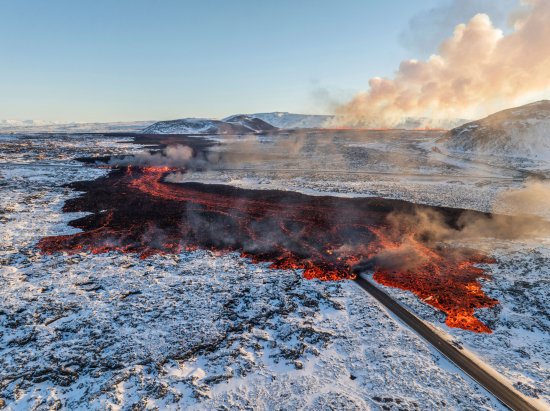
The Reykjanes Peninsula has been active since 2020.
An Icelandic volcano system erupted for the third time since December on Thursday, in a phenomenon that could impact the world-famous Blue Lagoon hot springs.
The eruption, which began around 6 a.m. local time, has already affected roads and structures, damaging a pipe that supplies hot water for tens of thousands of locals. Volcanic activity also caused a 3000-meter crack running from Sundhnúk to Stóra-Scógfell, with plumes from the eruption measuring 3000 meters high, according to the Icelandic Met Office.
The nearby fishing town of Grindavik has been evacuated since November, when a previous round of eruptions damaged roads, power lines, and caused deadly cracks in the ground. Reports indicate that the power of the eruption has since decreased, though this most recent instance of volcanic activity signals a rise in eruptions that experts expect to continue to see.
The Reykjanes Peninsula has been active since 2020, when it experienced seismic activity for the first time in eight centuries, though eruptions prior to 2023 were harmless to the surrounding region.
Iceland houses more than 30 Holocene volcanoes, which are volcanoes that have erupted sometime in the last 11,700 years.
Here’s a photo roundup of the volcano eruption.








